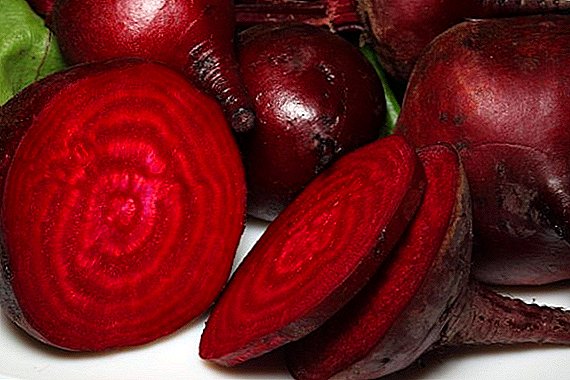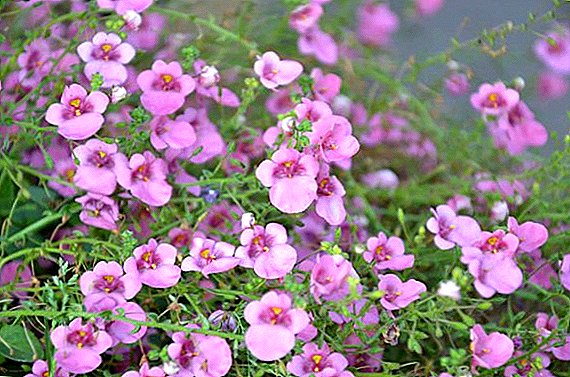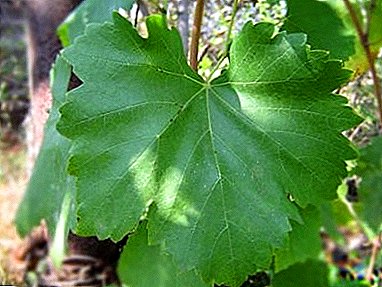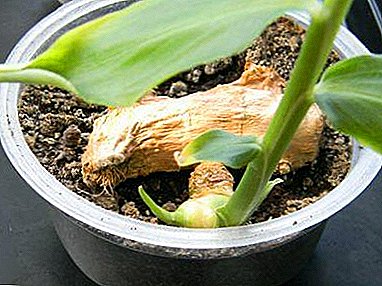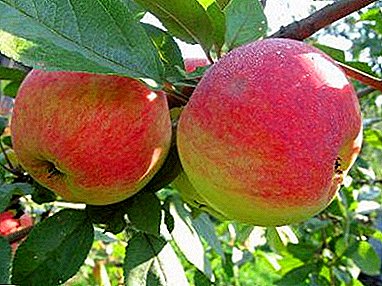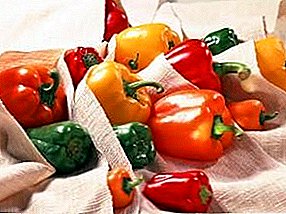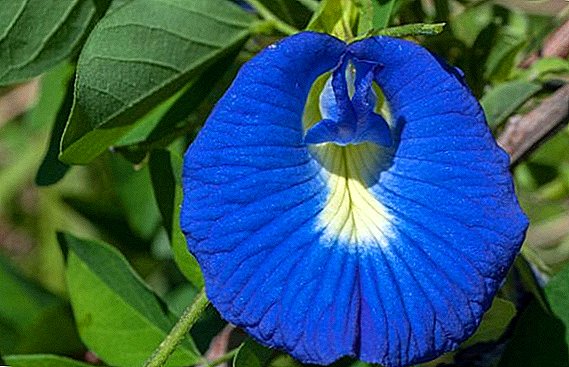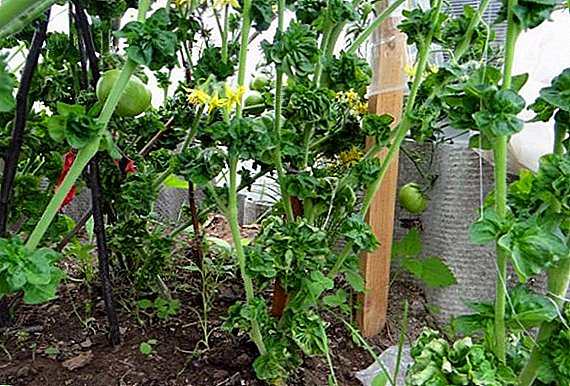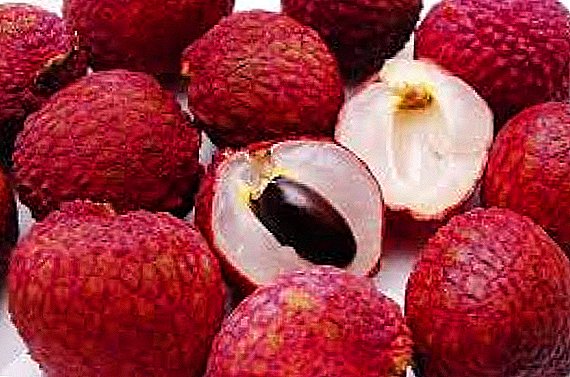 Exotic fruits are increasingly entering our lives. If earlier we were content with canned fruits ("tropical cocktail", "pineapple in our juice", etc.), now in any supermarket you can easily buy fresh fruit from the other end of the planet. Eyes scatter - showcases with tropical delicacies strike with an abundance of colors, aroma, various forms. However, the purchase of an unfamiliar fruit may puzzle (not all, after all, rested in Thailand or Bali) and raise many questions: what is lychee fruit, how to eat such fruit and what is edible in it, how it tastes and whether it is healthy.
Exotic fruits are increasingly entering our lives. If earlier we were content with canned fruits ("tropical cocktail", "pineapple in our juice", etc.), now in any supermarket you can easily buy fresh fruit from the other end of the planet. Eyes scatter - showcases with tropical delicacies strike with an abundance of colors, aroma, various forms. However, the purchase of an unfamiliar fruit may puzzle (not all, after all, rested in Thailand or Bali) and raise many questions: what is lychee fruit, how to eat such fruit and what is edible in it, how it tastes and whether it is healthy.
Did you know? The oldest mention of the litchi tree dates back to the year 59 (the period of the Chinese Han Eastern dynasty) is a story about a nobleman who, having accidentally tried the fruit of the litchi, hurried to inform Emperor Liu Zhuang about the delicacy discovered (although there are legends about Emperor Wu Di who still in 2 BC I wanted to land lychees in northern China). Most likely the birthplace of litchi is southern China. It is known that in the 8th century, Emperor Tang Xuanzong sent 600 warriors to fetch these fruits for his beloved concubine, Yan Yuhuan (the legendary female riddle in China and Japan), who loved them very much. Vietnamese believe that litchi ended up in China as a gift from the Vietnamese emperor of the Mai dynasty (although it is known that there was no such dynasty in Vietnam, there was a "black emperor May" - a poor man who rebelled against the Chinese and proclaimed himself emperor). A large mission with gifts (among which were lychees) went to China with the founder of the Mac - Dang Zung dynasty. But it was already in 1529.
What is lychee
Lychee (Litchi chinensis) is an evergreen tree with a wide crown. It grows to a height of 30 meters. It grows in the tropics and subtropics of Eurasia, Africa and America. Lychee has many other names: "Chinese plum", "Limes", "dragon's eye", "Chinese grapes", "Lisi", "Linches". Leaves are odoriferous, lanceolate, dark green color.
 When flowering, flowers without petals form umbellate inflorescences. Lychee is a wonderful melliferous plant (pollinated primarily by bees). The fruits grow in clusters (13-15 pieces each) and ripen in May-June. The harvest ranges from 10 kg (in cool climates) to 150 kg (in optimal conditions).
When flowering, flowers without petals form umbellate inflorescences. Lychee is a wonderful melliferous plant (pollinated primarily by bees). The fruits grow in clusters (13-15 pieces each) and ripen in May-June. The harvest ranges from 10 kg (in cool climates) to 150 kg (in optimal conditions).
Lychee fruits have an oval shape, size from 2 to 4 cm, weight up to 20 grams. Ripe red fruit with tuberous skin. Lychee peel is easily separated (covered with a film from the inside) and opens the tender white flesh-jelly. The flesh has a pleasant sweet and sour, slightly knitting taste of plums and grapes. Inside the fruit is a hard dark brown bone (resembles an acorn).
Despite the abundance of varieties (over 100), the most popular are:
- hanging green - one of the most ancient and rare. Keeps freshness without peel for three days;
- sticky rice balls. Differs in honey smack and a small sunflower seed (sometimes is absent in general);
- Huaychi ("bunches of berries in hand");
- March red (ripens before all);
- Yang Yuhuan smile (early ripening, red juice in the peel);
- sweet osmanthus. Possess the smell of osmanthus flower.
They collect the fruits of litchi in clusters (it is better to transport them, they are stored longer). Often, for better safety during transportation, they are harvested immature. Lychee retains its true taste no more than three days after collection.
Did you know? Appearance in Europe and worldwide distribution of litchi is obliged to the French botanist Pierre Sonner (1748-1814). The scientist traveled to Indochina, China and brought with him not only descriptions of unseen plants, but also their seedlings. The French liked the taste of litchi so much that in 1764 on Fr. The first plantation of this plant was planted by Reunion (engineer J.-F. Charpentier de Cossigny de Palma). The French landed Litchi on about. Madagascar (became a global supplier of this fruit). Lychee began to be widely grown in South Africa, Australia, on the South Japanese islands, in Central America, Brazil and the USA.
Calorie, nutritional value and composition of lychee
 Lychee is distinguished by a low calorie ˜- 66 kcal, low in fat and protein. The fruits are especially rich in vitamins and minerals. Ascorbic acid (71.5 mg) takes the leading position among vitamins. An important place is occupied by vitamins of group B - niacin, thiamine, riboflavin, pyridoxine, pantothenic and folic acid. There is also a rare vitamin K or phylloquinone (important for normal blood clotting), E (tocopherol), D (viosterol) and H (biotin).
Lychee is distinguished by a low calorie ˜- 66 kcal, low in fat and protein. The fruits are especially rich in vitamins and minerals. Ascorbic acid (71.5 mg) takes the leading position among vitamins. An important place is occupied by vitamins of group B - niacin, thiamine, riboflavin, pyridoxine, pantothenic and folic acid. There is also a rare vitamin K or phylloquinone (important for normal blood clotting), E (tocopherol), D (viosterol) and H (biotin).
The vitamin group is supplemented with micro and macro elements: phosphorus, potassium, calcium, copper, magnesium, sodium, zinc, selenium, iron, manganese, iodine.
Important! Lychee peel contains many essential oils. They give the fruit flavor. In the food, the bones and peel are not consumed.
As a rule, lychees are eaten fresh or frozen (as they contain the most beneficial properties). In India, Indochina and China you can find the so-called "litchi nuts" ˜ dried fruit in the peel. During drying, the peel hardens and, if shaken, a dry nucleolus rumbles inside (there are fewer vitamins, but the mineral composition is preserved.)
What is litchi good for the body?
Unique combination of vitamins and minerals, low calorie make lychee valuable nutritional and therapeutic product.
Prevention of anemia
 Regular consumption of litchi fruit effectively helps in preventing anemia. A high percentage of copper in litchi plays a large role in increasing the number of red blood cells.
Regular consumption of litchi fruit effectively helps in preventing anemia. A high percentage of copper in litchi plays a large role in increasing the number of red blood cells.
Did you know? Congo tea is very popular in Asia. When brewing, it emits a rich grapefruit smell, while tasting there is a peculiar taste of lychee sweetness. The secret of this tea is in the addition of dried lychee peel pieces. In Thailand, this tea is drunk with ice as a soft drink.
Help digestion
Lychees contain soluble fibers, free the stomach and intestines from toxic and harmful substances, normalize digestion (eliminate constipation). Lychee pulp has antacid properties, eliminates nausea, helps with mild diarrhea, acidity of the stomach and dyspepsia. Powder ground seeds in traditional medicine of India and Vietnam helped get rid of worms, deal with disorders of the gastrointestinal tract.
For skin beauty
The appearance of the skin of the face and body can be affected by the litchi flesh. It is rich in many components that are good for the skin, nourishes and moisturizes it, has antioxidant properties, helps to restore collagen, improves appearance, smoothes wrinkles. At home, it is easy to make a face mask from fresh fruit. Gels and creams containing lychee extract also widely used for skin care.
For bone strength

Minerals (phosphorus, magnesium, manganese, calcium, etc.) effectively maintain the condition of bones and teeth. Lychee pulp also contains vitamin D (which is important for the body to absorb calcium).
Did you know? Lychee is known as a strong aphrodisiac. In China, it is believed that the fruit of litchi maximally concentrates the energy "Yang" - "equal to three torches of fire", a symbol of love and manhood. Similar views on lychee exist in Indian folk medicine - before getting together, it is recommended that a couple in love eat a lychee fruit, and its benefits will be manifested in enhancing male sexual power and mutual attraction.
Slimming
From the pulp of litchi fruit, oligonol was developed, which is effective reduces fat mass and improves blood circulation. Lychee extract is included in various diet drugs. Knowing how to eat lychee properly (namely, to use fresh up to 250 g per day) will help those who want to lose weight. Lychee fruit is 82% water, low-calorie, cholesterol-free, contains healthy fiber and pectin.
For heart
The abundance of polyphenols (15% higher than their content in grapes), a high content of nicotinic acid, potassium, copper and manganese in perfect proportion makes consumption Lychee is exceptionally useful for people with heart and vascular problems. Lychee removes excess cholesterol, dilates blood vessels, regulates the frequency of contractions of the heart muscle, regulates the level of pressure, etc.
Contraindications and restrictions in consumption
 The use of litchi by adults has no special restrictions, and there are practically no contraindications for them (except for individual intolerance). Even with excessive use of litchi, the worst thing that can happen is mucosal irritation and gas formation in the intestines, therefore, it is better to limit the consumption of six to seven fruits.
The use of litchi by adults has no special restrictions, and there are practically no contraindications for them (except for individual intolerance). Even with excessive use of litchi, the worst thing that can happen is mucosal irritation and gas formation in the intestines, therefore, it is better to limit the consumption of six to seven fruits.
Important! Children under three years old are not allowed to eat litchi fruits.. Those who are more than three years old need to limit the number of lychees (two or three pieces) and, most importantly, not to give it on an empty stomach. In 2017, scientists discovered the cause of annual epidemics among children in India: for 25 years from mid-May to June, a massive illness of children with acute encephalopathy occurred (40% of the patients died). The reason was that the immature lychee fruits contain hypoglycine and methylenecyclopropylglycine (they block glucose synthesis). All these children ate unripe lychees on the eve of the disease on an empty stomach, and their glucose levels dropped sharply.
Therefore, to neglect what is useful lychee dFor a child's body, it is not necessary, but it is necessary to follow simple rules: give fruits after a meal, select ripe and fresh fruits, make sure that there are no allergic reactions.
Lychee in medicine and cosmetology
 The unique chemical composition of the litchi fruit allows you to use the fruit and its beneficial properties both in pure form and in the form of an extract in dietary supplements, as part of drugs, for the treatment and prevention of many diseases (especially active in China, Korea, Japan).
The unique chemical composition of the litchi fruit allows you to use the fruit and its beneficial properties both in pure form and in the form of an extract in dietary supplements, as part of drugs, for the treatment and prevention of many diseases (especially active in China, Korea, Japan).
Scientists isolated polyphenol oligonol from litchi, which rid the body of free radicals. Useful fruits litchi for sight - contain zeaxanthin.
Exotic litchi is included in the composition of anticancer drugs, sedatives, immune support, heart, anti-edema, cough and other drugs. Lychee syrup helps with anemia. Traditional medicine makes extensive use of fruits, peel, seeds, lychee flowers for the treatment of many diseases.
Did you know? The bulk of the extract of litchi is made in laboratories in Thailand and China. The extract is obtained from peeled dried and chopped fruits treated with organic solvents. After filtration and drying, a yellow powder without taste and odor is obtained. Used extract in the manufacture of medicinal and cosmetic products.
Litchi extract in the composition of cosmetic preparations (night and day creams, shampoos, balms, sun creams, masks, varnishes, sprays, etc.) has an effective impact: 
- softens and moisturizes dry and problem skin;
- regenerates cells;
- protects against ultraviolet radiation;
- maintains water balance of the skin;
- has a beneficial effect on the hair (nourishes, strengthens the roots and tips of the hair, restores damaged areas).
How to choose the right lychee fruit when buying
Lychees ripen in June-July. Considering the necessary time of transportation (to Europe from Thailand, Vietnam, etc.), fruits are torn off unripe (ripen on the way), so you need to know how to choose the right lychees. The freshest lychees come to our shelves in early autumn. When choosing fruits should pay attention to:
- on color. The fruit should be red (dark shades to burgundy will speak of over-ripeness, lighter, yellowish - of under-ripeness);
- on the stalk (must be without stains);
- on the peel (without stains and damage);
- on the density (you need to shake - there will be a light knock. This is a sign that there is no rot);
- on the smell (should be felt light pink scent).
Important! Lychee fruit is not subject to long-term storage. At room temperature, they lie for two or three days. In the refrigerator, you can extend the shelf life up to a week. If you do not separate the fruit from the bunch - up to two weeks in the fridge. As an option - lychee can be frozen (this will not affect the taste, and all the vitamins will be preserved). Fruits should be cleaned before freezing.


